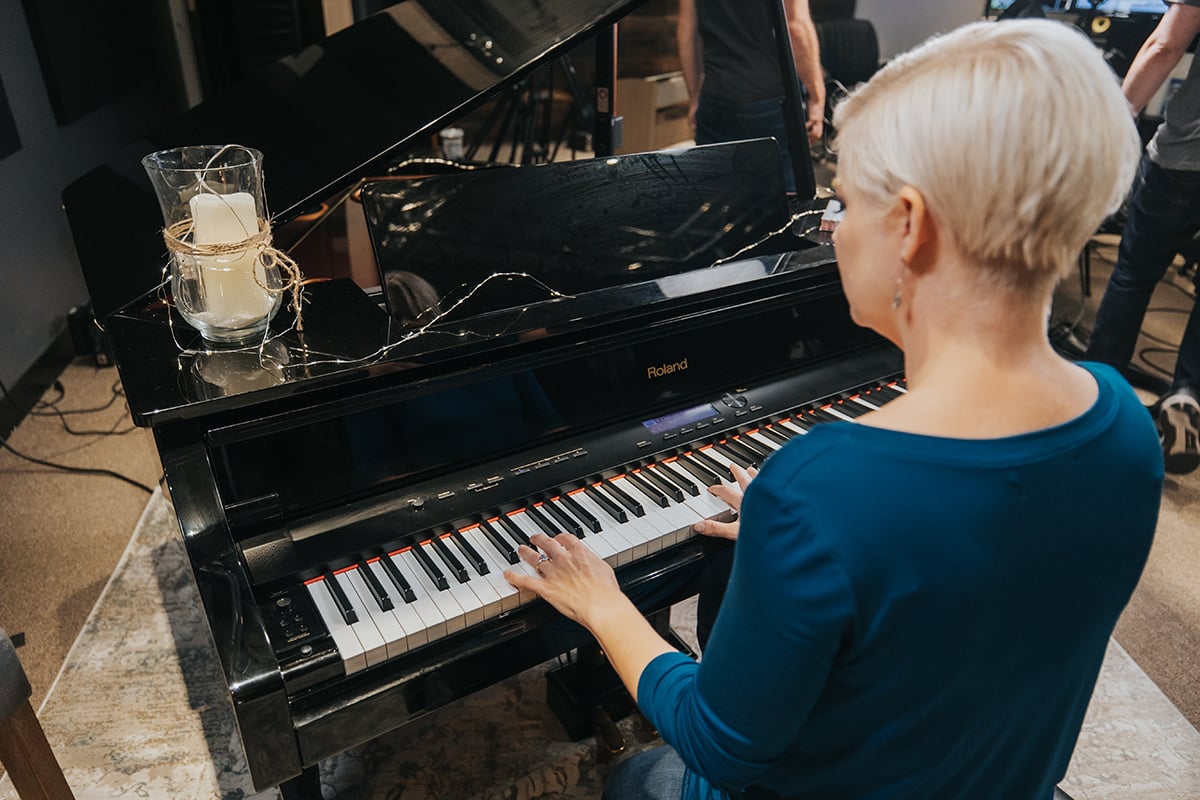We all want to be able to sound fancier while we’re playing our chord progressions. This applies to jamming with a band, accompanying yourself while you sing, improvising, songwriting, and anything that involves chording. Many people are concerned that they don’t do enough with their left hand which results in an empty sound. Fear not! There are some really simple ways that you can make your progression sound much more connected and full by adding in fresh rhythms and notes into your left hand. Here are some ideas!

For many people, our left hands are weaker. And while the right hand typically carries the melody on the piano, piano wouldn’t be the same without the left hand providing beautiful arpeggios and accompaniment patterns. Your left hand deserves more love, so check out the De-stupefy Your Left Hand course to give it the attention it needs! Free with your Pianote membership.
As a beginner, you are likely just playing a single note per measure in your left hand as your right-hand plays through the progression. Try adding in a few more of the exact same notes you are playing in your left hand. This sounds especially good if you add in notes on the offbeat or the “and”. This is demonstrated perfectly in the video lesson!
Anytime you travel the distance of a third (for example from Am to F) you can play the note in between on the offbeat to travel you up or down to the chord you are transitioning to.
You can choose any note of the chord you are playing to use as the bass- you don’t have to stick with the root note. Try subbing for the 3rd or 5th for a fresh sound!
Using octaves will help you to create a really rich and deep sound when played in solid form. You can also break them up and play them broken to help you pass between your chord. Experiment with playing heavy octaves low on the keyboard, or light octaves in a broken form a little higher up to see how it changes the vibe of what you are playing.
Once you get going with these ideas you will realize that the possibilities are endless!
Have fun!
Lisa Witt has been teaching piano for more than 20 years and in that time has helped hundreds of students learn to play the songs they love. Lisa received classical piano training through the Royal Conservatory of Music, but she has since embraced popular music and playing by ear in order to accompany herself and others. Learn more about Lisa.
/marketing/pianote/promos/april/banner-bg-m.webp)
We use cookies for traffic data and advertising. Cookie Policy »
/marketing/pianote/promos/april/banner-title.webp)